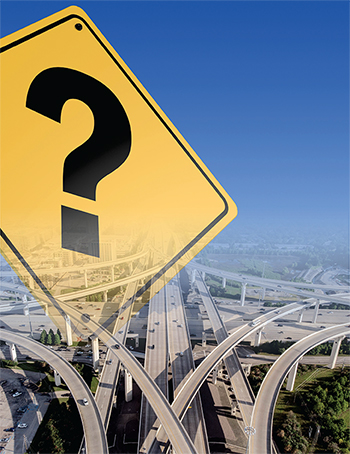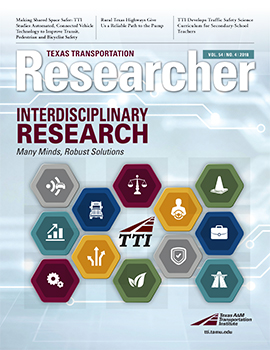Plastic or paper. Decaf or regular. Cash or credit.
Consumers make choices every day. Whether it’s about how we shop, how we dine, or how we purchase goods and services, most of our decisions are pretty straightforward. We know what we want, and we know why. When it comes to how we commute, however, things aren’t so simple, according to ongoing research at the Texas A&M Transportation Institute (TTI).

Traveler use of managed lanes should be based on a logical assumption that drivers will weigh the benefits of reduced travel time against the cost of a toll. In theory, they will consider the options and make a conscious choice of whether to use the general purpose lane (GPL) or the managed lane (ML). This choice is the foundation of travel models that predict the use of toll roads or managed lanes. However, the models require that travelers adhere to a traditional economic concept of rational choice — that they act in a way to serve their own best interests. The problem is humans don’t always behave rationally.
That helps explain what Mark Burris — a professor of civil engineering at Texas A&M University and TTI research engineer — found in examining more than two years of trip data on the Katy (I-10) Freeway in Houston. That stretch of I-10 has four toll lanes that allow high-occupancy vehicles to travel free of charge during much of the day, while single-occupancy vehicles must pay to use the lanes.
Burris found that approximately 82 percent of travelers seem to be sticking with long-established patterns of travel behavior. Over the two-and-a-half-year period, some 79 percent of travelers used GPLs for all their Katy Freeway trips, and about 3 percent consistently chose MLs for all their Katy Freeway trips — regardless of congestion levels or toll charges.
“At some point before the period examined in the project, travelers made a choice about which lanes to use,” Burris says. “They appear to not be changing their travel behaviors using available information on current costs and congestion levels.”
Only 17 percent of those travelers were mixing their use of both the MLs and GPLs, Burris says. “Many of those travelers don’t appear to base their choices on rational economic considerations, nor were their actions illustrating any sort of patterns reflecting congestion and toll levels. The kind of results we would expect didn’t occur.”
The lane-use volumes were drawn from data on millions of individual trips recorded by transponders. Unique random ID numbers were assigned to all transponders to ensure the data were anonymized and that no vehicle owners could be identified.
A sample that large increases the confidence associated with trip patterns. It does not, however, offer insights into traveler choices and factors influencing those choices. Perhaps the drivers didn’t fully understand how the MLs operate, Burris and his colleagues posit, or maybe they’re simply creatures of habit.
Understanding how drivers compare alternatives and assign values to make their travel choices is important to agencies making informed infrastructure investment decisions. To gain such insights, Burris has fielded a multidisciplinary team that includes psychologists and economists to support a new four-year study, Using Behavioral Economics to Better Understand Managed Lane Use, sponsored by the Federal Highway Administration.
Beginning with surveys and continuing with lab experiments, the team hopes to identify the psychological traits that might influence someone to choose or not choose to use the MLs. For example, simulated driving tasks will involve choices based on variable payoffs that change slightly from day to day. A driving simulator will also be used to test research participants’ responses to different cost and travel-time saving options. Later in the project, hypotheses will be tested on travelers using one ML facility in Dallas, Texas, and another near Washington, D.C.
One concept of behavioral economics holds that people might find a more direct and easy path to rational decision making if the decision environment is restructured in some way. In other words, they can potentially be nudged into making wiser choices.
“We hope to communicate with our research volunteers in ways that influence them to more thoughtfully consider their options and become conscious choosers,” Burris says. “Our ultimate goal is an improved method for estimating ML use based on how travelers really behave — not the rational behavior model that seems inadequate when capturing true travel behavior.”
